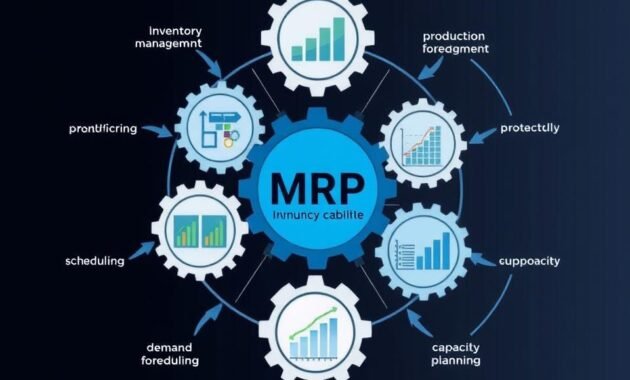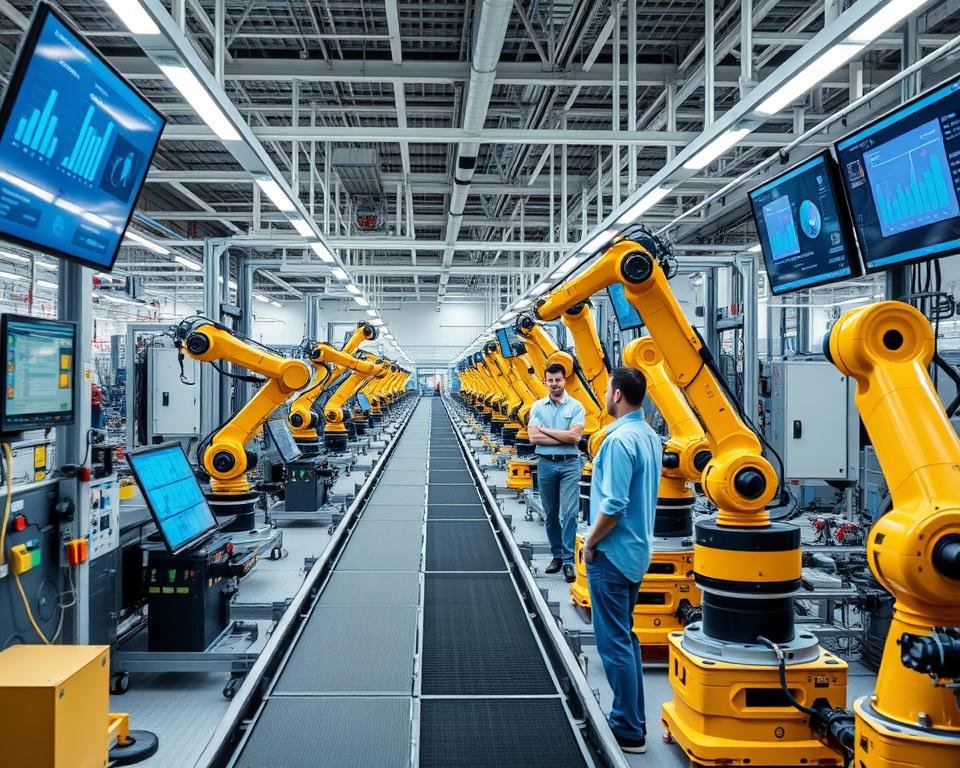In today’s fast-paced and competitive business environment, manufacturers face the constant challenge of optimizing their production processes to meet customer demands, control costs, and maintain a competitive edge. One of the key tools that can help achieve these goals is Manufacturing Resource Planning (MRP), a comprehensive system that integrates and coordinates various aspects of the manufacturing process.
MRP is a powerful tool that provides a holistic view of the manufacturing operations, enabling businesses to make more informed decisions, reduce waste, and enhance overall efficiency. By synchronizing inventory management, production scheduling, and supply chain optimization, MRP empowers manufacturers to streamline their operations, minimize downtime, and respond quickly to changing market conditions.
Key Takeaways
- Manufacturing Resource Planning (MRP) is a comprehensive system that integrates and coordinates various aspects of the manufacturing process.
- MRP provides a holistic view of the manufacturing operations, enabling businesses to make more informed decisions, reduce waste, and enhance overall efficiency.
- MRP synchronizes inventory management, production scheduling, and supply chain optimization to streamline operations and minimize downtime.
- MRP empowers manufacturers to respond quickly to changing market conditions and maintain a competitive edge.
- Implementing MRP can lead to significant improvements in production efficiency and cost control.
Understanding Manufacturing Resource Planning
Manufacturing Resource Planning (MRP) is a comprehensive system that integrates various production-related functions to optimize the manufacturing process. It encompasses material requirements planning, capacity planning, and shop floor control, creating a seamless and efficient workflow.
Definition and Key Components
At its core, MRP is a software-driven system that helps manufacturers plan, schedule, and control their production activities. The key components of MRP include:
- Material Requirements Planning: This module calculates the required materials and components needed to meet production targets, ensuring efficient inventory management.
- Capacity Planning: MRP analyzes the available production capacity and helps manufacturers balance their resources to meet demand, reducing lead times and improving delivery times.
- Shop Floor Control: This component tracks the progress of production orders, providing real-time visibility and enabling manufacturers to make informed decisions about the production process.
Benefits for Production Efficiency
The integration of these key components in an MRP system brings numerous benefits to manufacturers, including:
- Improved Inventory Management: MRP helps reduce excess inventory, minimize waste, and ensure that the right materials are available at the right time, reducing carrying costs and improving cash flow.
- Enhanced Production Scheduling: By aligning production plans with available capacity, MRP helps manufacturers avoid bottlenecks and optimize their production schedules, leading to increased throughput and on-time delivery.
- Streamlined Shop Floor Control: Real-time visibility and tracking of production orders enable manufacturers to identify and address issues quickly, improving overall production efficiency and reducing lead times.
- Increased Lean Manufacturing: MRP supports lean manufacturing principles by reducing waste, improving responsiveness to changes, and fostering a culture of continuous improvement.
| Key MRP Components | Benefits |
|---|---|
| Material Requirements Planning | Efficient inventory management, reduced waste |
| Capacity Planning | Optimized production schedules, improved on-time delivery |
| Shop Floor Control | Real-time visibility, quick issue identification and resolution |
| Lean Manufacturing | Waste reduction, improved responsiveness, continuous improvement |

Implementing Manufacturing Resource Planning
Integrating manufacturing resource planning (MRP) with enterprise resource planning (ERP) systems is a crucial step in optimizing production processes. ERP software provides a comprehensive platform for managing a company’s core business functions, including financial management, human resources, and logistics. By aligning MRP with ERP, organizations can achieve a more streamlined and efficient approach to their operations.
Integration with Enterprise Resource Planning
Successful MRP implementation requires seamless integration with an organization’s ERP system. This integration allows for real-time data sharing, ensuring that production plans, inventory levels, and other critical information are continuously updated across the entire business. This integration supports just-in-time production, enabling companies to respond quickly to changing market demands and minimize waste.
To achieve this level of integration, businesses must carefully align their MRP and ERP processes, ensuring that data flows smoothly between the two systems. This may involve implementing robust data management protocols, training employees on the use of both systems, and continuously monitoring and adjusting the integration to address any challenges that arise.
| Benefits of Integrating MRP with ERP | Challenges of Integrating MRP with ERP |
|---|---|
|
|
By integrating MRP with ERP, organizations can leverage the power of both systems to drive continuous improvement in their manufacturing operations. This integration supports just-in-time production and enhances enterprise resource planning, ultimately leading to greater efficiency, responsiveness, and profitability.
Conclusion
In today’s highly competitive manufacturing landscape, the adoption of lean manufacturing practices and optimization of production processes have become essential for businesses to maintain a competitive edge. Manufacturing Resource Planning (MRP) has emerged as a powerful tool that can help organizations achieve these goals.
Throughout this article, we have explored the key components and benefits of MRP, as well as the steps involved in its successful implementation. By integrating MRP with Enterprise Resource Planning (ERP) systems, manufacturers can streamline their operations, reduce waste, and improve overall production efficiency.
The implementation of MRP can be a transformative step for any manufacturing business, enabling them to optimize their production optimization and drive continuous improvement. As the industry continues to evolve, the adoption of MRP will become increasingly critical for companies seeking to maintain a competitive edge and stay ahead of the curve.

